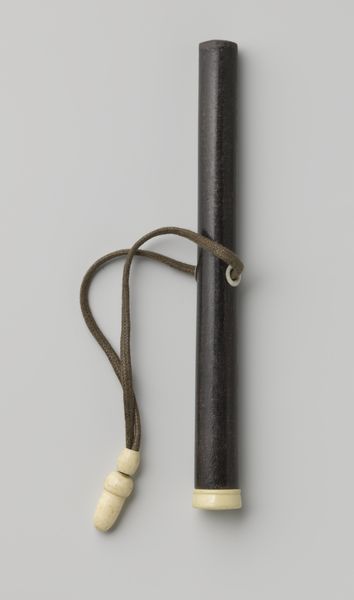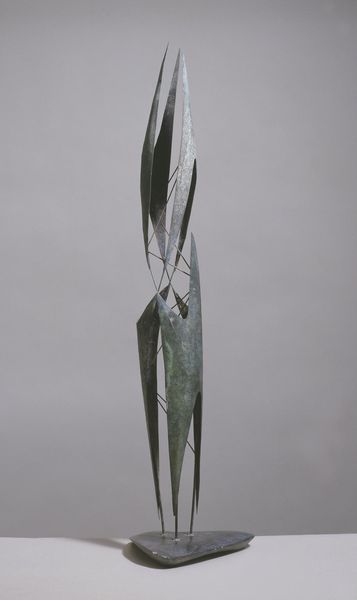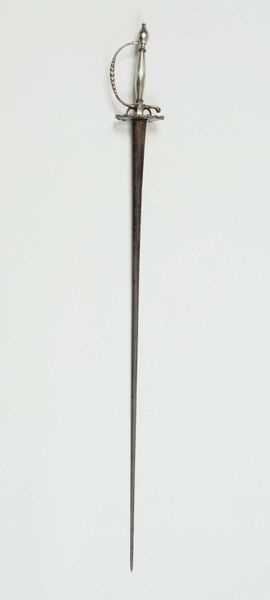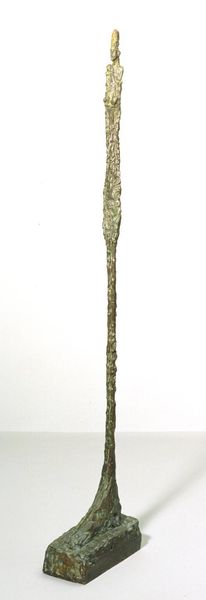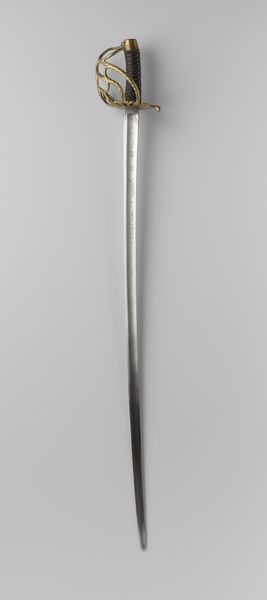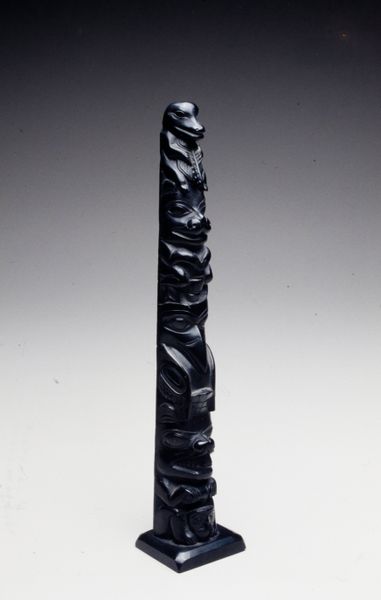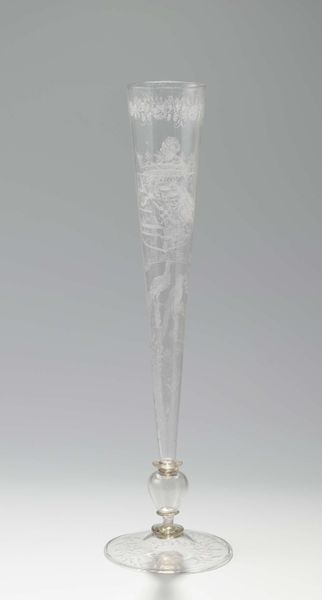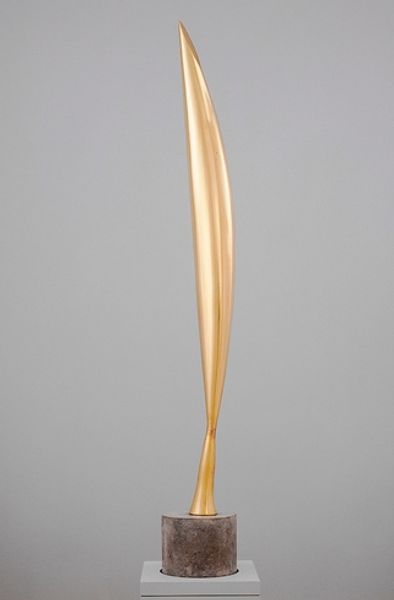
Copyright: Constantin Brâncuși,Fair Use
Editor: Here we have Constantin Brâncuși's "The Signal" from 1929, made of metal. It’s a curious piece, almost like a calligraphic gesture frozen in mid-air. The lines are so spare, yet it feels incredibly dynamic. How do you interpret this work? Curator: Well, considering Brâncuși's context, and the rise of abstraction, this work disrupts traditional notions of form, doesn't it? "The Signal" speaks volumes about the power of reduction. What do you notice about its interaction with space and the suggestion of movement? Editor: It’s as if it is always vibrating and it does have such an architectural presence. It is very imposing in that regard. The industrial material itself seems to contrast with its airy lightness. Curator: Precisely. Brâncuși's work engages with the social landscape, too. There's an interrogation of the material, of industrialization versus the organic form of the artist. It prompts us to consider modernism’s evolving dialogue between technology and the human spirit. Can we extract from the non-representational form a connection with culture? Editor: Yes, I can see that; it’s almost a challenge to find humanity in such rigid construction, which might be a direct reaction to social shifts occurring during the rise of technology. Curator: And consider too that this came after WW1. Perhaps Brâncuși is inviting a dialogue about reshaping after times of turmoil, both personally and socially. By stripping away detail, is he somehow commenting on loss? Editor: That's a powerful perspective, looking at it through the lens of loss and rebuilding. Curator: It shifts my understanding from pure aesthetic appreciation to a consideration of socio-political commentary through abstraction. Editor: Absolutely. Thanks, that’s a richer understanding than I had coming in.
Comments
No comments
Be the first to comment and join the conversation on the ultimate creative platform.


